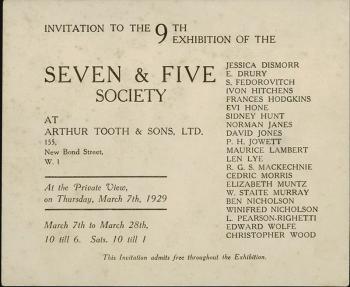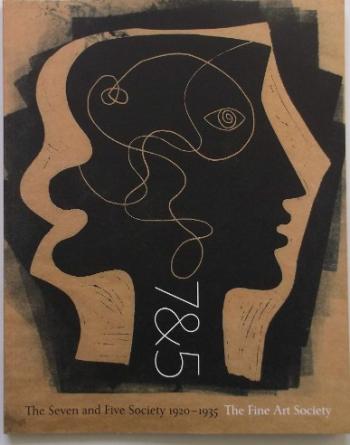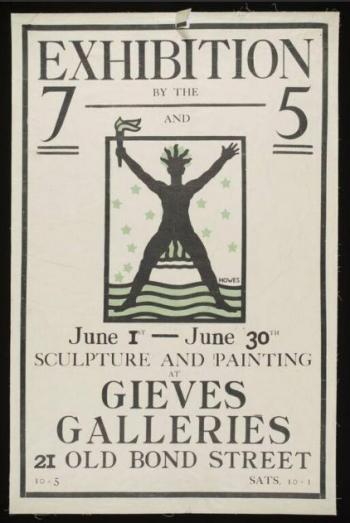Seven and Five Society
The Society was established in 1919 by a group of artists and sculptors who had become disenchanted with the London Group and its domination by the Bloomsbury artists. The Society owes its name to the original intention of the founding members, which included Ivon Hitchens, to restrict membership to seven artists and five sculptors. At the first exhibition, held in 1920, the Society stated its aims as being '... to group together men who do not attempt to achieve publicity by the mere eccentricity of form or colour, but believe that to be sincere is not necessarily to be dull.' When Ben Nicholson was invited to join the group in 1924, his influence created a major shift in direction towards a more progressive approach. He was elected Chairman in 1926 and when, in 1934, he introduced a ruling restricting the work shown at the Society's exhibitions to non-representational only, the effect was to create a schism in the group that resulted in several of its members leaving.
Among the dissidents were Cedric Morris, John Aldridge, Edward Bawden and Eric Ravilious, all of whom moved to Suffolk and together set up the East Anglian School of Painting and Drawing. Exhibitions had been held variously at the Beaux Arts Gallery, Walker's Gallery, Leicester Galleries and at Arthur Tooth & Sons. According to an article published in Artwork, early in 1927, the membership had risen to 20 with a very diverse range of members with disparate styles of work. The additional members included Elizabeth Drury, Norman Janes, Joseph McCulloch, Lena Pillico and George Woolway.
In 1935, the Society renamed itself the Seven and Five Abstract Group after Nicholson voted to change the name to the ‘7 & 5 Society’ to look more modernist but failed to get the group changed to ‘7 & 5 Abstract Group’. The group held the first all-abstract exhibition and what was to be its final show in Britain at the Zwemmer Gallery in London. It included paintings by Winifred Nicholson and John Piper. During the fifteen years of its existence, both membership and exhibitors included some of the most important names of the period such as Barbara Hepworth, Frances Hodgkins, David Jones, Cecil Stephenson, Henry Moore and Edward Wolfe and it proved to be a major influence on British art with its effects pervasive and evident long after its demise.
Get Unlimited Access from just £5




